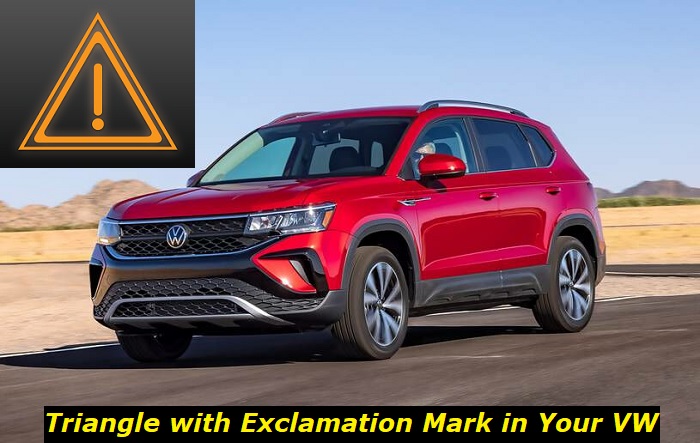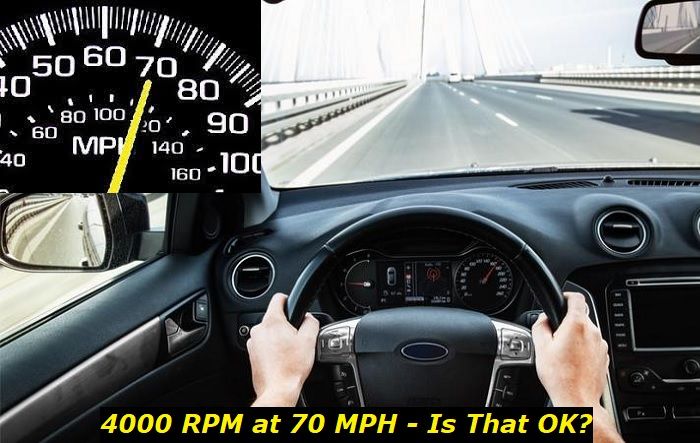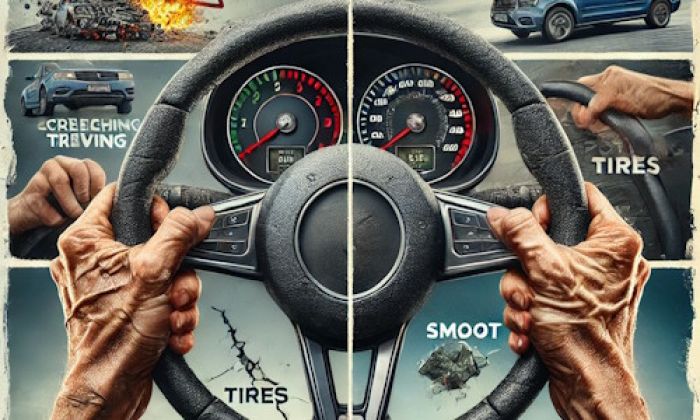Understanding the dashboard lights and warnings is one of the most important things a driver needs to know. However, there are so many of them that it seems impossible to understand what they all mean.
Triangle with exclamation point light highlights
- Common reasons:master warning - look for other warnings or codes
- How to fix:read the codes
- Possible consequences:something may malfunction
- Priority level:Medium
- Can you drive?Carefully
- DIY repair:Possible
- Repair price range:$150-$300

What Does the Triangle with Exclamation Point Warning Mean on a Volkswagen?
Here's one of the hints that will help you understand the scale of the problem: the color of the light indicates the severity of the issue with your Volkswagen. The central warning light appears in two colors, yellow and red.
When the central warning light is yellow, it indicates that there is a problem that requires your attention, but the problem is not urgent. This means you can still keep driving, but you should address the issue as soon as you are able to.
However, when the light is red it implies that the problem is much more urgent. This means that you need to pull over immediately to address the problem. If needed, you should seek the assistance of an expert.
This is not a self-sufficient warning light and it doesn't mean anything special. Volkswagen designed it to draw your attention and to inform you that there is a problem with the vehicle. So, it shouldn't pop up on its own.
If you see the red or amber (yellow) exclamation mark in the triangle in your VW vehicle, you need to look for other warning lights or error messages on your dash or on the screen on the central console. Find the message that your car tries to grab your attention for.
Can I Drive with the Central Warning Light On in Volkswagen?
Dashboard warning lights are unpredictable and can come on at any time. This can be particularly frustrating when they come on while you're in the middle of the road. If the central warning light comes on while you're on the highway, you might wonder whether you can keep driving or not. Is it at all safe to drive when you see a triangle with an exclamation point in it?
As stated above, the answer depends on the color of the warning light. The yellow warning light indicates a problem that needs to be serviced soon but will not affect your driving. If the warning light is yellow, you'll be able to get to your destination safely. However, you should make sure to address the problem as soon as you can.
A red warning light indicates that the problem affects how your car drives. Continuing to drive your car in this state is unsafe. This problem could result in a loss of control or some other form of engine or mechanical failure that could lead to an accident. A red warning light is an indication that you should stop driving as soon as possible.
Also, you may see another light - Stop Warning Light - if your Volkswagen asks you to stop the vehicle because of safety precautions. This may mean that something is wrong with the brakes or the steering system, so driving the car further may not be safe at all.
How Do I Get Rid of the Warning?
The only way to get rid of the central warning light is to rectify the problem that caused it to appear. This means that you'll need to get rid of the underlying problem first.
This can be tricky because almost any vehicle problem can cause the central warning light to come on, from brake problems to low wiper fluid.
Here are the steps to follow to clear this warning light from your car.
1) Don't Ignore the Warning
Whether the warning light is yellow or red, it should not be ignored. If the light is yellow, you can continue to drive for now. However, that doesn't give you a free pass to ignore the problem. It's possible for a minor issue to develop into a much more serious problem with time.
If the light is red, you should examine the problem immediately. Slow down, and pull over as soon as it is safe. Don't drive the car any farther than you absolutely need to.
2) Look For the Error Message
Once you have parked safely, you can begin investigating the cause of the problem. A central warning light will come on with a message on the car's information center and a dashboard warning light. Take note of which dashboard lights are on. You shouldn't turn off the engine yet, first, locate the message or light that will tell you more about the issue.
Sometimes, you may get more information by browsing the info center in your menu. Depending on the year and model of your vehicle, you may find hidden error messages and recommendations in the information menu on your dash or central console.
3) Examine the Source of the Problem
Once you've found the cause of the problem, you can figure out the next step. If the problem is something minor, like topping up the wiper fluid or tightening the gas cap, then you can quickly fix this yourself.
However, if the light is red and the problem is hard to identify, our advice is to call a tow truck. You can't risk your life and just keep driving. The problem may be with the brakes and you will lose the ability to slow down in your Volkswagen which will inevitably lead to accidents or other dangerous situations on the road.
If you can't locate the problem on your own, just let professional mechanics do that. Take your car for inspection as soon as possible.
4) Contact a Mechanic
If the issue is more complicated than you can handle, or you're afraid that you can't resolve the problem yourself, you can take the car to a mechanic.
Going to the VW dealership is a good idea. They will provide the vehicle with the proper inspection using OEM equipment and scanners. This is the fastest and the most precise way to find the initial problem that triggers the warning lights. You may choose to repair your car elsewhere if it isn't covered by the warranty anymore.
Common Problems that Illuminate the Central Warning Light
As we've mentioned before, the central warning light comes on for a broad range of reasons. The light acts as a trouble indicator. This makes it impossible to list out all of the reasons that the light could come on.
However, some common problems are tied to this light. The first thing to do when you see this light is to check the dashboard for any other warnings and check the car's information center for any messages. This will inform you more specifically about what the problem with the car is.
Here are some common reasons the central warning light will become illuminated:
1) Yellow Warning Light
A yellow warning light usually comes up for problems that won't stop your car from driving. Some of these problems are minor issues that can be handled quickly, while some will require a trip to the mechanic.
Some examples of problems that could cause a yellow warning light are:
- Low wiper fluid
- Loose or missing gas cap
- ABS malfunction
- Some sensor malfunction
- Low outside temperature
- ESP actively helping you keep the traction
2) Red Warning Light
A red warning light is very serious and indicates a problem that compromises how your vehicle drives. These issues are much more severe and can result in the loss of control, or an accident if you continue driving.
These issues can also result in serious damage to the car or engine if you don't stop driving as soon as it is safe to.
Some examples of problems that result in a yellow central warning light are:
- Low oil pressure
- Brake problems
- Low battery charge
- A faulty airbag
- An open door
- Low Engine Coolant
- Low tire pressure
What If there is No Other Light or Message?
The central warning light is simply an indicator of some problem in the car. It usually comes up along with another light or an error message. If it appears on its own without any other light or error message, this signifies a potential electrical issue or software glitch.
If you receive an illuminated central warning light without any error message in the car's information center or any dashboard warnings, you may try these three simple tricks:
- Turn the car off and then on again. Sometimes, this will reset the failure and the light will not reappear.
- Disconnect the battery for 5 minutes. This is the way to reset your ECU and all errors and codes that are active. Sometimes, it will help you get rid of the problem with the exclamation point in the triangle.
- Charge or jump the battery. It may be that the actual reason for this warning light illuminating without any other hints is the low battery charge. Use a booster, jumping cables, or a charger to get your 12V battery back to life. Or replace the battery to see if this helps.
If nothing helps, you should take your Volkswagen in for inspection and repairs. A professional mechanic will obviously find the problem quickly and help you get the vehicle back on the road in no time.
Conclusion
So, the triangle with the exclamation mark in it is the central warning light in your Volkswagen. This is an important feature that is aimed to draw your attention to a certain problem with the vehicle. The light may be red or amber (yellow).
When it's yellow, it means you may keep driving. But you should still inspect the dash and the central console screen for any signs of error messages or accompanying lights. Maybe, the problem can be solved for 1 minute.
If the light is red, you should stop once it's safe and try to understand what the problem is. Driving your vehicle when this light is illuminating is not recommended - this can be unsafe.
Hope now you have the answers to all your questions regarding this warning light. If you need more help, please write your questions in the comments below!
About the authors
The CarAraC research team is composed of seasoned auto mechanics and automotive industry professionals, including individuals with advanced degrees and certifications in their field. Our team members boast prestigious credentials, reflecting their extensive knowledge and skills. These qualifications include: IMI: Institute of the Motor Industry, ASE-Certified Master Automobile Technicians; Coventry University, Graduate of MA in Automotive Journalism; Politecnico di Torino, Italy, MS Automotive Engineering; Ss. Cyril and Methodius University in Skopje, Mechanical University in Skopje; TOC Automotive College; DHA Suffa University, Department of Mechanical Engineering






Add comment